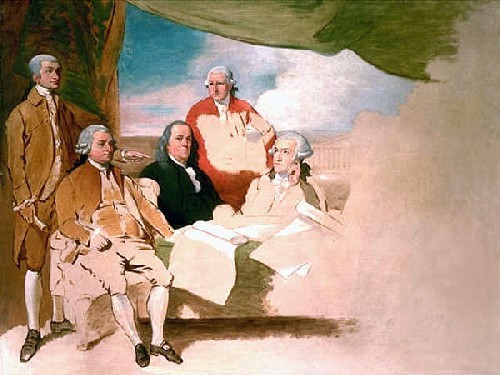
The 1783 Treaty of Paris (not to be confused with the 1763 treaty that ended the French and Indian War) was the agreement which formally ended the War of Independence. Though large-scale fighting ceased with the American victory at Yorktown, it would be another two years before a treaty was written and ratified by both nations.
The terms of this treaty were negotiated by America’s various European diplomats, including Benjamin Franklin, John Adams and John Jay. The terms of the Treaty of Paris were quite favourable to the new United Nations. In fact, most points requested by the American delegates were accepted.
Private debts existing before the revolution were to be honoured while the American states were encouraged to take steps to compensate Loyalists for land and property seized during the revolution. Both Britain and the United States were granted unrestricted access to and shipping rights on the Mississippi River, an important waterway for trade and transport.
“This treaty gave the United States excellent terms, far better than France and Spain were to get, for which the American negotiators (Franklin, John Adams, John Jay) deserve most of the credit. Not only did the British recognise American independence, make peace and grant valuable concessions to American fishermen in Canadian waters, they conceded most generous boundaries to the new republic. [But] the Peace of Paris left many problems unsolved. It defined America’s place in the international system, but that place was an unsatisfactory one… and reflected the country’s weakness and unimportance in the scheme of things.”
Hugh Brogan, historian
Once signed, the treaty was returned to the governments of both nations for ratification. The British parliament was horrified at the excessively generous terms granted to the Americans, and several times refused to ratify the Treaty of Paris – yet there was no desire to restart the war in America either. A third attempt to force the treaty through parliament caused the resignation of Lord North in 1782, leaving Britain without a prime minister for almost a month. Westminster eventually passed the treaty, though few British politicians were content about the fact.

Citation information
Title: ‘The Treaty of Paris’
Authors: Jennifer Llewellyn, Steve Thompson
Publisher: Alpha History
URL: https://alphahistory.com/americanrevolution/treaty-of-paris
Date published: July 18, 2019
Date updated: November 24, 2023
Date accessed: April 25, 2024
Copyright: The content on this page is © Alpha History. It may not be republished without our express permission. For more information on usage, please refer to our Terms of Use.
